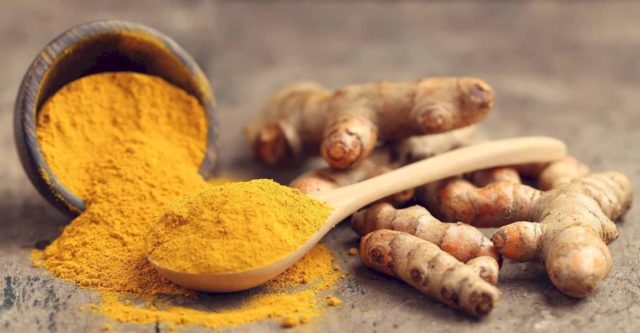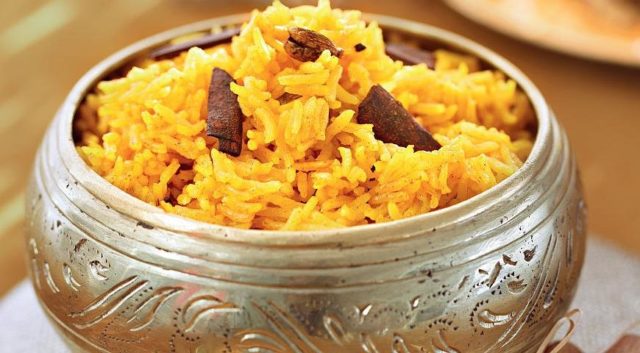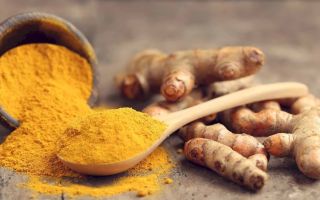Content
To improve the taste and appearance of food, the food industry uses additives labeled with the letter E. This means that it has been tested, found safe and included in the Codex Alimentarius - a set of international standards. E100 is a food additive of plant origin and the first representative of the class of dyes in the food additive system.
What an additive
The common name for E100 is curcumin. It has a bright yellow color and pronounced taste. It dissolves well in alcohols, does not dissolve at all in water, therefore curcumin salts are used as a spice.
Turmeric is native to India, where it was used not only in cooking, but also in medicine. Then she was brought to Greece, and then to China. The countries of Europe did not appreciate the specific taste of this additive, except England: there are still many traditional dishes prepared with the addition of turmeric.
What food coloring E100 is made of
E100 is extracted from ground turmeric root (Curcuma longa). The food coloring itself is subdivided into curcumin and turmeric:
- turmeric (E100i) - ground turmeric root;
- turmeric (E100ii) is a chemically extracted substance from the root of the same plant.

To avoid confusion, the terms turmeric and turmeric are used for spices and curcumin is used in food production.
Comparative characteristics of turmeric and turmeric are presented in the table.
|
|
Curcumin |
Turmeric |
|
Physical properties |
Powdery consistency with yellow-orange crystals |
The powder is yellow with a brown tint, has a pronounced taste |
|
What is extracted from |
Curcuma longa bark and root |
Curcuma longa rhizome |
|
How is it produced |
The natural way: with a special solvent from the root Synthetic route: by chemical reaction to acetoacetic ether |
Grinding material to a powder consistency |
|
Permission / prohibition to use |
Approved (not dangerous) |
Approved (not dangerous) |
|
Benefit or harm |
Harmless, anti-tumor effect found |
Harmless |
|
Permissible daily dose |
Not more than 0.1 mg per 1 kg of body weight |
Not more than 0.1-, 15 mg per 1 kg of body weight |
|
Where is applied |
For coloring food in the food industry. When dyeing cosmetics and fabrics. Used as an indicator for the detection of boric acid |
For making curries. |
Benefits and harms of food additive E100
The influence of the food additive E100 on the body is ambiguous. Beneficial Effects:
- Reduces inflammation by blocking the molecules that stimulate these processes. Curcumin is useful in the treatment of chronic inflammatory diseases.
- It triggers the death of cancer cells without affecting healthy ones.
- Active against Helicobacter pylori.
- It interferes with the work of monoamine oxidase, which destroys the mediators of the central nervous system, so E100 can have an antidepressant effect.
- Protects liver cells from the effects of alcohol.
- Low toxicity.
- Fights the accumulation of beta-amyloid, which is the cause of Alzheimer's disease.
- E100 can reduce pain in the treatment of knee osteoarthritis.
- For severe kidney damage, supplementation lowers the level of inflammatory protein (C-reactive).
Harmful effects:
- In smokers, the dietary supplement may contribute to lung cancer.
- When consumed in a daily dose exceeding 0.3 mg per 1 kg of body weight, it causes liver damage.
Such a diverse effect on the body is due to the ability of E100 additive molecules to penetrate practically all cellular barriers. For example, through the placental, because of this, it is not recommended to use the spice during pregnancy.
Dangerous or not E100 food additive
Numerous clinical studies give an unequivocal answer - there is no danger in the supplement itself. However, during the production of raw materials, foreign matter can get into the powder. And with the synthetic method of production, there is a risk of chemicals entering the finished product. The additive is allowed in all countries of the world.
Where and why add E100 dye
In the East, curcumin is used as part of traditional medicine. For example, in India, a medicinal powder with curcumin is prepared for cough. An ointment is made with it to treat sprains. In China, this seasoning is used for abdominal pain and loss of appetite.
In cooking, E100 additive is used to prepare:
- liquor;
- guilt
- cheese;
- canned food;
- confectionery;
- sausage products;
- sauces (such as mustard and mayonnaise);
- chips;
- carbonated drinks;
- bakery products.

It is rarely used in the manufacture of cosmetics, since it is unstable to the action of ultraviolet rays. It is often used in the manufacture of dietary supplements.
Conclusion
The positive effect of E100 has been proven, the food supplement can be used even in the treatment of serious diseases. Its safety has been proven, and its flavor properties allow the additive to be used in the manufacture of many products.

